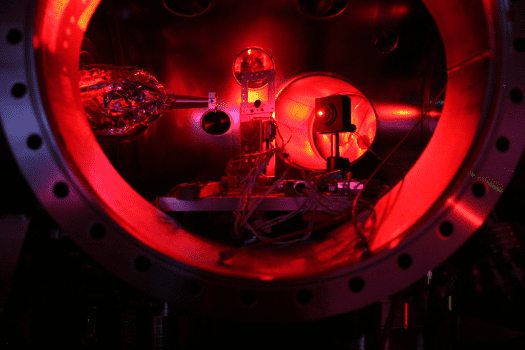
Image Credit: NASA/SDO/IRIS
Launched just month, NASA’s IRIS telescope which is currently orbiting Earth has already beamed down its first images of the sun. The details are unprecedented, as scientists can now study a multitude of thin, fibril-like structures that have never been seen before, revealing enormous contrasts in density and temperature. The telescope’s main mission is that of furthering our understanding of how the sun functions, and most importantly how it interacts and affects us here back on Earth.
“These beautiful images from IRIS are going to help us understand how the sun’s lower atmosphere might power a host of events around the sun,” said Adrian Daw, the mission scientist for IRIS at NASA’s Goddard Space Flight Center in Greenbelt, Md. “Anytime you look at something in more detail than has ever been seen before, it opens up new doors to understanding. There’s always that potential element of surprise.”
Named the Interface Region Imaging Spectrograph, or IRIS, the telescope is the culmination of a massive collaborative effort spanning across many years and several word-renowned institutions like NASA and the Harvard-Smithsonian Center for Astrophysics in Cambridge.
IRIS will help scientists catch glimpses otherwise impossible of the sun’s mysterious atmosphere or corona and explain some of the startling phenomenae that have been puzzling astronomers for decades. For instance, the sun’s atmosphere is counter-intuitively much hotter than the actual surface – almost a thousand times greater that is. The main hypothesis is that the sun’s magnetic energy fuels this massive temperature flux, but to understand how exactly this happens astronomers need to study the sun in exquisite detail. Luckily IRIS is uniquely tailored to unravel the interface region.
The telescope works its magic by combining two main instruments: an ultraviolet telescope and a spectrograph. The first provides high-resolution images, capturing data on about one percent of the sun at a time, however the images are of one wavelength of light at a time. The spectrograph then provides information about many wavelengths of light at once by splitting the sun’s light into its various wavelengths and measuring how much of any given wavelength is present. All this information is then compiled and represented under the form of a graph that shows spectral lines. Analysis of the spectral lines can also provide velocity, temperature and density, key information when trying to track how energy and heat moves through the region.
“The quality of images and spectra we are receiving from IRIS is amazing. This is just what we were hoping for,” said Alan Title, IRIS principal investigator at the Lockheed Martin Advanced Technology Center Solar and Astrophysics Laboratory in Palo Alto, Calif. “There is much work ahead to understand what we’re seeing, but the quality of the data will enable us to do that.”
The IRIS mission has long-term implications for understanding the genesis of space weather near Earth. Understanding how energy and solar material move through the interface region could help scientists improve forecasts for the kinds of events that can disrupt Earth technologies.



